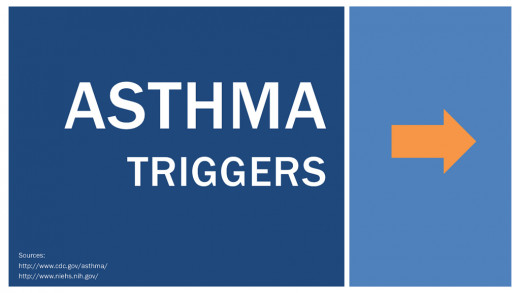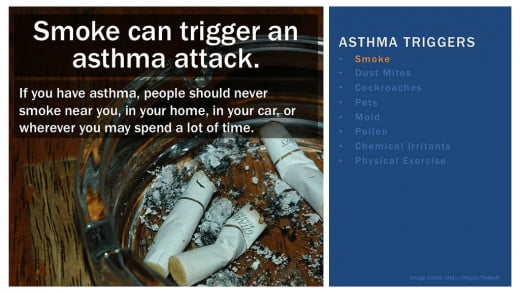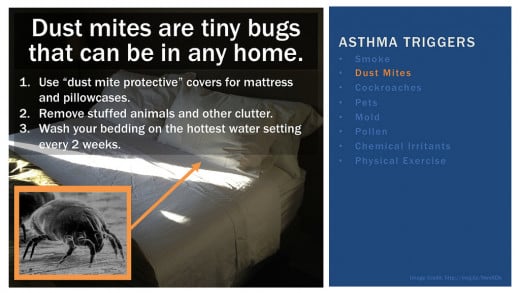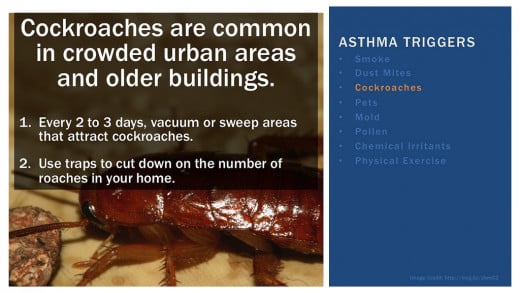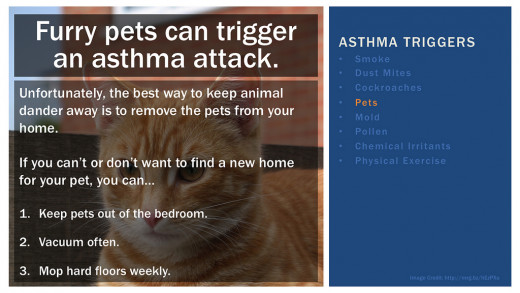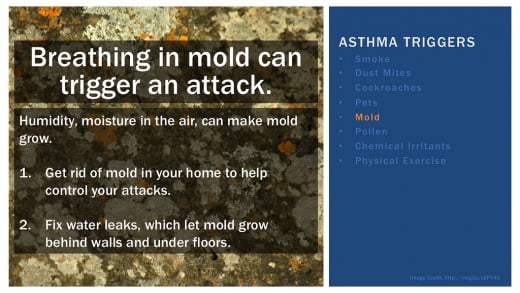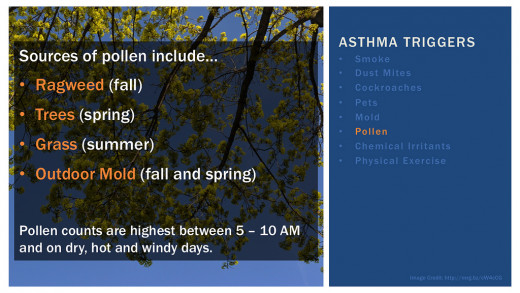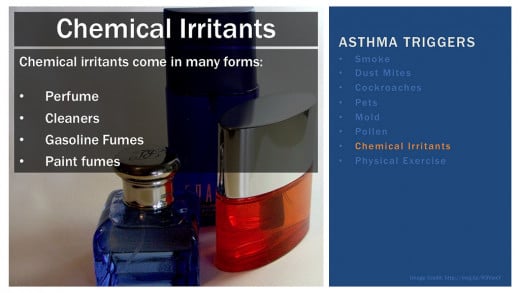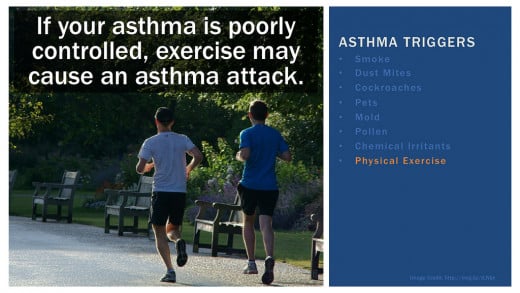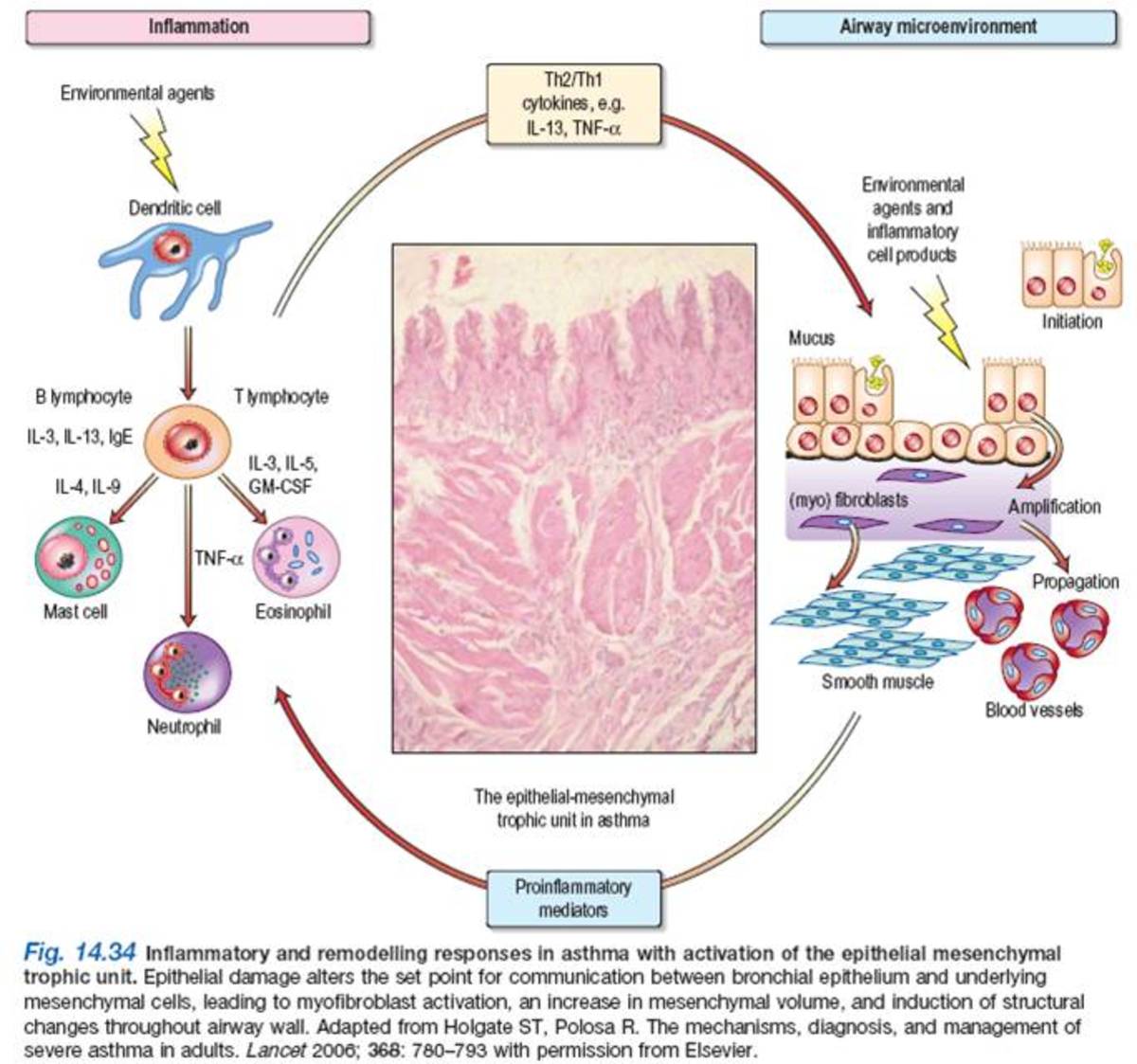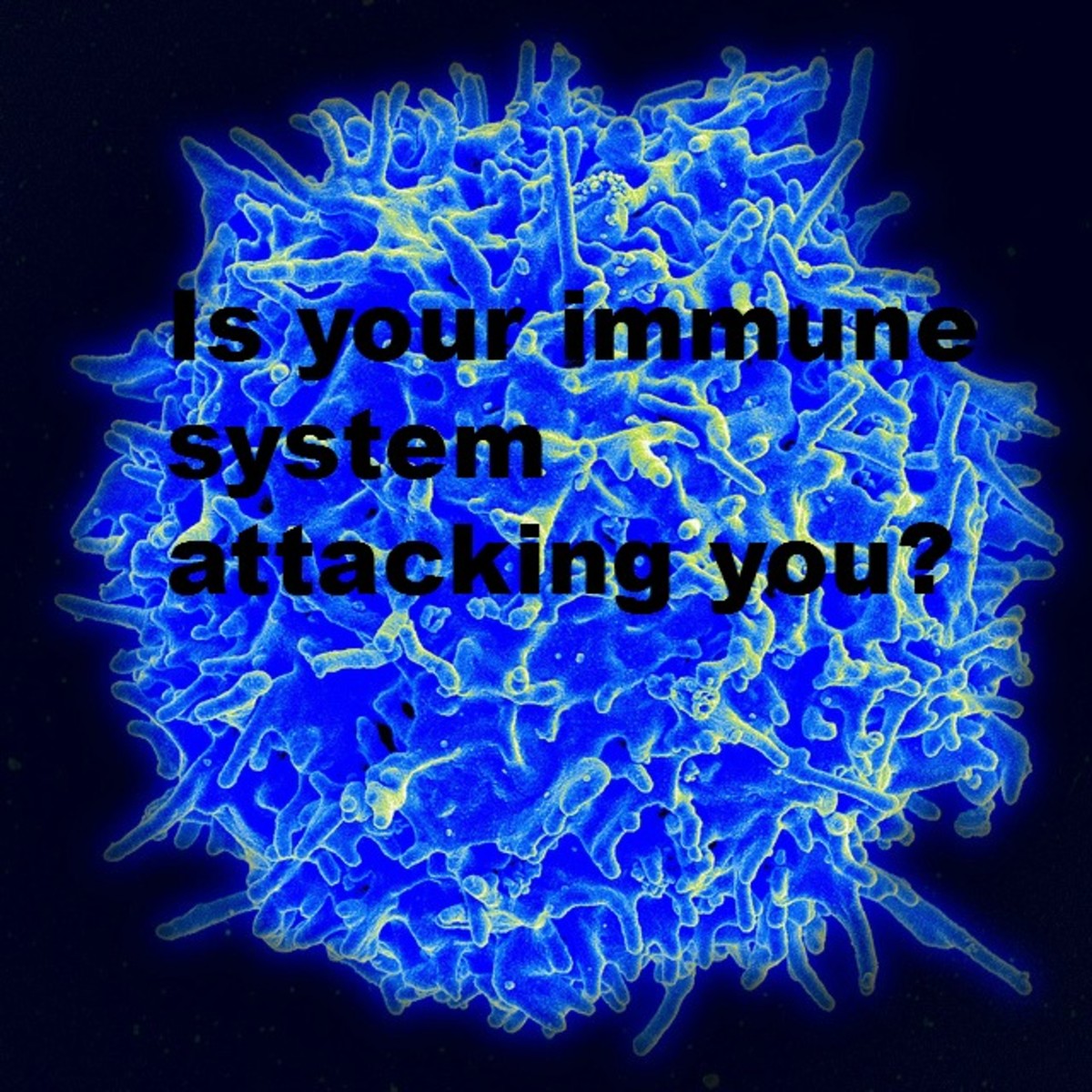Asthma Treatment: Importance of Early Recognition
At A Glance
Bronchial asthma (BA), or more commonly known simply as asthma, is one of the most common respiratory diseases worldwide. It may manifest at any time in life, but the younger population group are the ones with the highest risk. Most patients are children during their elementary years who are usually caught with attacks in school.
What are the early warning signs to watch out for prior to episodes of exacerbation? What are the most commonly known "triggers"? What are the early remedies to be done? This article provides a brief summary of the disease condition, with emphasis on the management especially for first-time patients and their family members.
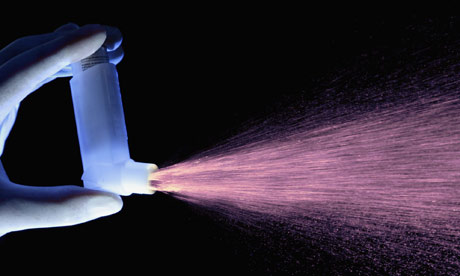
Children are Highly At Risk
Bronchial asthma is a very common chronic debilitating disease prevalent in the age group of younger children to elementary years. The exact cause of asthma may be due to several factors, but the most frequent of which includes exposure to allergens with early sensitization during childhood.
The WHO estimates that 235 million people currently suffer from asthma. Asthma is the most common noncommunicable disease among children. Asthma is a public health problem not just for high-income countries; it occurs in all countries regardless of the level of development. Most asthma-related deaths occur in low- and lower-middle income countries.
— World Health Organization, 2013Pathophysiology Behind Each Wheeze
The main problem revolves around the narrowing (to near closure) of the small airways in the respiratory tract. This means that the hallmark of the disease is essentially the effects of small lumen, or decreasing airway size of the patients. This is caused by exposure to different stimuli that makes an inflammatory response. Similar to how a wound in the skin reacts, there will be swelling, redness, and in this case- mucus production which blocks the passageway even more leading to breathlessness as the presenting symptom.
Most commonly, these are triggered reactions (see the other segments of further disucssion) due to environmental exposure to specific stimuli. When explained at the cellular level, an allergic reaction is caused by binding of IgE antibodies to mast cells, and with re-exposure to allergens, there is a latent response phase which serves as a trigger. Other viral respiratory infections may also cause asthma especially in children, this may even cause severe respiratory response in infants.
The diagram below enumerates the various factors that plays a role in disease causation. Several events interplay leading to the development of the disease. It may be induced by a virus, an allergen, or even exercise. Other multifactorial causes may include obesity and a combination of such mentioned triggers.
Causes and Severity of Asthma Attacks
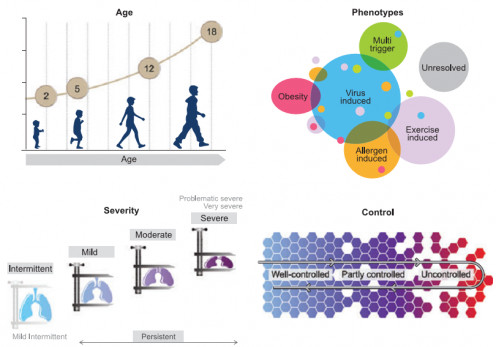
Fundamental Keywords!
- Asthma Attack/ Asthma Exacerbation
- Trigger
- Disease Variability
- Initial Stimulus
- Environmental Exposure
Early Warning Signs of An Impending Attack
The disease is generally very common and the detailed explantion can be seen on many online sources. This entry focuses on how first-time patients, or their parents should focus their attention in recognizing triggers and an impending exacerbation.
Before focusing on how to manage the disease, it is obviously important to learn its common signs and symptoms. Bronchial Asthma, as a disease process in itself is simply an "ongoing condition", meaning that disease entity is present once it is diagnosed -- similar to that of hypertension or diabetes mellitus. In general, it is technically not cured but merely treated. Now, the essential variable which is the hallmark of this disease are the sudden exacerbation commonly known as asthmatic attacks. These are instances when a known asthmatic individual suddenly develops the signs and symptoms (which will later be further elaborated) in a short period of time. Usually, this is related to an exposure to a stimulus, known as a trigger.
It is very important to note that this disease is very variable in nature. In a sense, it means that the manifestations, time frame, severity, and control is essentially different from person to person. Some are generally symptom-less for the most part of the year, most have seasonal attacks, while others have exacerbation with any trigger. Common manifestations include the following:
- Sudden-onset difficulty of breathing
- Chest tightness
- Audible wheezing sound while breathing (musical sound due to smaller airways)
- Coughing, which is most prominent at night
- Easy fatigability
The horror for most first-time parents
Attacks are very prevalent with the younger population group. With such information, it is fairly common that many are parents facing such problems. During first-time admission to the clinics, most are bewildered on how to manage the condition. The signs presented by patients are very obvious and are easily recognizable, but many think that they are still lacking education in terms of how they can manage such conditions.
Status Asthmaticus- The Real Medical Emergency
Severe asthma as seen in many unrecognized cases, is a frequent cause of hospital admission in the US. It has been seen in high-risk pediatric patient population necessitating admission to the Intensive Care Unit.
Status asthmaticus is a life-threatening condition for patients who are refractory to standard treatment of bronchodilators and steroids. This condition may be considered the end-stage and the worst manifestation of asthma. In this instance, a vast majority of the airways are blocked so the patient is unable to breath properly.
List of Commonly Occurring Asthmatic Triggers
Click thumbnail to view full-size








Asthma is a long-term disease with an unpredictable onset. The main goal is to prevent episodes of exacerbation, control of the signs and symptoms, and proper management of severe attacks
Have you ever suffered/or known someone who has asthma? How was it induced?
What Diagnostic Workups Are Done in the Hospital?
Several laboratory and diagnostic tests may be done when parents visit the clinic for the first time.
The most widely used assessment of lung function is the use of simple peak-flow measure and forced expiratory flow volume loop. This can be done with any age group, and is reliable for most children. Bronchodilator response may also be done to assess changes in lung capacities and this may be vital in relieving the inflammatory response. With this test, the patient’s lung function is measured with a machine which will predict if the actual capacity of the lungs is enough to support the body’s needs.
Another test that is used for recognizing the cause is through recognizing the involved allergen. Sensitization to allergen may be tested using skin price test. This is a simple, inexpensive, and the results are seen quickly. Chest X-ray may be done early to see any possible structural abnormalities which may cause recurrent onset of the respiratory symptoms.
In other patients, it is also prudent to check if there is a possibility that other causes of the respiratory problem. A complete blood count or sputum smear may be used to rule out other possible causes of respiratory infection.
Patient Assessment as the Number One Measure for Disease Management
The main goal for management is the avoidance of acute exacerbation. It cannot be further emphasized that in this disease condition, the quote "prevention is better than cure" will be the most fitting.
This may be done through assessment of the patient with the following:
- Possible allergens that may cause and increase the severity of attacks
- The use of first-aid measures whenever there is a perceived imminent attack
- Continuous monitoring of the patient status is well advised with confirmatory tests for allergens needed for cases with high recurrence rates of sudden exacerbation.

The Use of Maintenance Medications
Inhalers as the Mainstay treatment of Choice
There are two basic types of medications being used in the management of asthma. They are essentially grouped according to their main function during asthma attacks.
- Relievers- this group of drug focuses on management of the acute attack and to rapidly address the symptoms of the patient. Generally, the difficulty of breathing experienced by the patient is due to the sudden closure of small airways because of the inflammatory response. The relievers acts rapidly to reverse this process and make the airway size to its normal size. Some examples of this drugs include inhaled medications such as Salbutamol.
- Controllers- the second group of drug that is commonly used focuses on decreasing the likelihood of further asthma attacks. In essence, they can be grouped as your daily maintenance medication. These are used after the patient has already been relieved by the initial symptoms and act as managers to avoid the inflammatory cells from being hyper-reactive again in the presence of allergen. Most drugs that are present in this class are inhaled corticosteroids, which are also used as maintenance medications.
Long term Planning and Management
In order to meet the main goal, several strategy objectives are developed. One is to increase parental adherence to the treatment regimen. Another is to prevent exacerbations with patient education and the use of pharmacotherapy. It is also needed to identify the start of asthma attacks and learn how to treat its exacerbation.
What is essential to know is that the disease condition is treatable and manageable. Several inhaler drugs containing different forms of relaxants and steroids help combat the inflammatory response. This is adjusted according to the needs of the patient. Consulting the physician is a must in order to be given the appropriate type of medication.
Know Your Triggers and Warning Signs!
Common Household Triggers: Dust Mites, Cockroach Allergens, Molds Pollens, Intoxicating Chemical Fumes, Cigarette Smoke
Common Warning Signs: Difficulty Sleeping, Less tolerance to Exercase, Decrease in Appetite, Fatigue
Patient Living With Asthma
Seek Help and Keep Your Family Informed!
Several basic information about the disease condition should be relayed to the family and the patient. This is needed manage and prevent severe attacks. It should be kept in mind that the patient can experience the symptoms at any place, and at any given time. Patient education is imperative and should include the following information:
- Signs and symptoms during sudden attacks
- Role of reliever, oral steroids and preventer medications
- Use and checking inhalations devices
- Role of allergen in the disease process and how to avoid them
- Importance of regular check-up and monitoring
© 2014 LM Gutierrez

